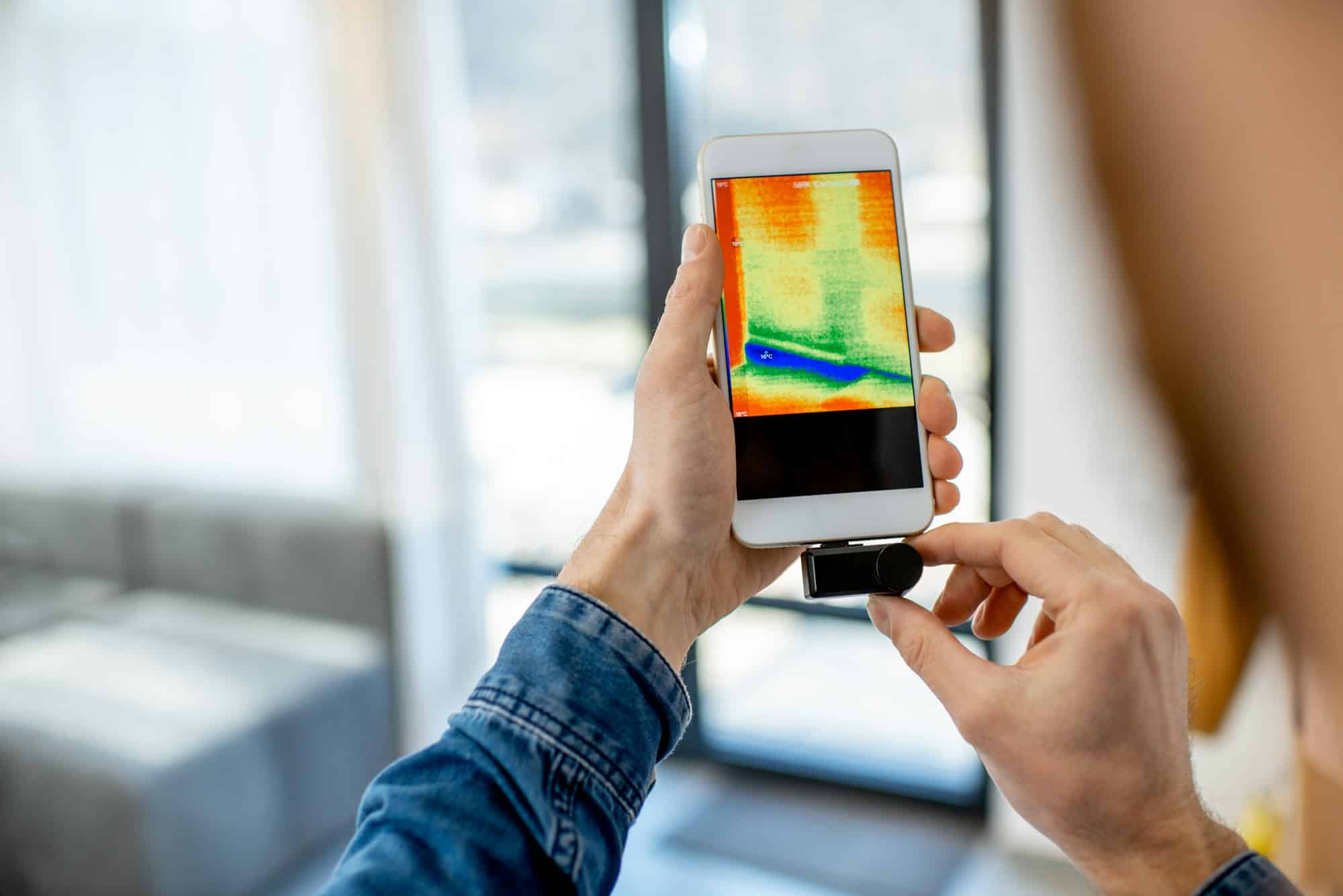As the world is rapidly moving towards technological advancements, our everyday gadgets are becoming more complex and sophisticated. One such innovation that’s been making waves in the consumer tech sector is the integration of advanced thermal cameras in smartphones. This technological leap could drastically change how we approach DIY home repairs.
Understanding Thermal Imaging Cameras
Before we delve into the specifics of how thermal imaging cameras can enhance DIY home repairs, it’s essential to gain a basic understanding of how this technology operates.
Avez-vous vu cela : Can AI-Driven Real-Time Analytics Predict and Mitigate Supply Chain Disruptions?
Thermal imaging is a technique that uses infrared radiation (heat) to generate an image. An object’s temperature and its emissivity (how well it emits heat) will dictate the clarity of its thermal image. In layman’s terms, the thermal camera in your smartphone can detect heat-signatures and translate them into a visual image or video.
Up until recently, thermal cameras were mostly used in industrial, military or professional settings. But now, with advancements in technology, they’re becoming increasingly common in consumer technology, specifically smartphones. This technological progression has opened up a plethora of applications for thermal imaging, one of which is DIY home repairs.
A découvrir également : What Are the Latest Innovations in Smart Grid Cybersecurity?
Potential Applications in DIY Home Repairs
It’s time to explore the many ways that advanced thermal cameras in smartphones can revolutionize the process of DIY home repairs. These highly sensitive devices can help not only in detecting problems but also in providing data for the correct fixing solutions.
The most obvious application is in the area of insulation. A thermal camera can easily detect areas in your home where heat is escaping. Whether it’s a window that’s not properly sealed, an uninsulated wall, or a weak spot in your roof, your thermal camera will detect the temperature difference and show you exactly where you’re losing heat.
Thermal cameras can also be a game-changer in detecting water leaks. Instead of tearing apart your walls or floors to find the source of a leak, you can simply scan the area with your thermal camera-enabled smartphone. The device will detect the temperature difference between the wet and dry areas, allowing you to pinpoint the leak’s location.
Another potential application lies in electrical systems. Overheating in electrical systems can be a serious issue, often leading to dangerous situations such as fires. Using a thermal camera, you can scan your electrical systems and devices for hot spots, indicating a potential overload or short-circuit situation.
Advantages of Using Thermal Cameras for DIY Home Repairs
Now that we’ve outlined some potential applications for thermal cameras in DIY home repairs, let’s look at the benefits of using this technology.
A significant advantage of using thermal imaging for home repairs is that it allows you to detect potential issues before they become serious problems. For instance, detecting a small water leak before it becomes a major flood can save you not only in repair costs but also prevent the possible loss of valuable possessions.
The accuracy of thermal imaging is another advantage. When you’re dealing with temperatures, a precise reading is crucial. Advanced thermal cameras can provide highly accurate temperature readings, ensuring that you get an accurate diagnosis of any potential issues.
Moreover, thermal imaging helps you conduct non-destructive testing. For instance, instead of drilling holes in walls to check insulation, you can simply scan the wall with a thermal camera.
Limitations and Considerations
While the integration of thermal imaging in smartphones offers numerous advantages, there are also some limitations and considerations to take into account.
First, while thermal images can often indicate an issue, they can’t always identify what’s causing it. For example, if you notice a cold spot on your wall, it might be due to poor insulation, but it could also be caused by something else such as a damp patch.
Secondly, thermal imaging cameras might not always be able to detect small or thin objects, as they might not emit enough heat. This means that while they can be great for detecting significant issues, they may not pick up on smaller or more subtle problems.
Finally, while thermal cameras are undoubtedly useful tools, they should not replace professional inspections where required. While they can give you a general idea of problem areas in your home, they don’t provide the level of detail that a professional inspector might offer.
The integration of advanced thermal cameras into smartphones has indeed paved the way for a more proactive and effective approach to DIY home repairs. While this technology is not without its limitations, its potential benefits are substantial, making it a valuable tool for homeowners.
Thermal Imaging Apps and User Interface
In order to fully utilize the advanced thermal cameras in smartphones, interactive and user-friendly thermal imaging apps have been developed. These apps are designed to make thermal imaging accessible and easily understandable for the average consumer.
These applications process the data obtained from the thermal camera and present it in a visual format that is easy to interpret. The colors in the thermal image represent different temperature levels, with cooler areas often represented by blues and purples, and warmer areas by reds and yellows.
The apps often come with additional features. Some allow users to overlay thermal images onto regular photos for better reference. This feature can be particularly useful when identifying the exact location of a problem, such as a heat leak.
Others have data logging features, allowing users to save and compare thermal data over time. This can be beneficial in tracking the progress of home repairs or in identifying recurring issues. Users can also share these images and data with professionals for further analysis or advice.
Several apps also offer a range of measurement tools. For instance, some apps can provide spot temperature readings, allowing users to pinpoint the exact temperature of a specific area. Others have area measurement tools that calculate the average, highest, and lowest temperatures within a selected area.
Despite the numerous benefits, it’s important to remember that the accuracy of the thermal image and the effectiveness of the measurements depend heavily on the quality of the thermal camera in your smartphone. Higher resolution cameras often provide more accurate and detailed images.
Conclusion: Embracing Technology for Home Repairs
The integration of advanced thermal cameras into smartphones is a clear indication of how quickly and creatively technology is evolving to assist us in our daily lives. As we have discussed, thermal imaging can revolutionize DIY home repairs by making it easier to detect and diagnose potential issues.
However, while thermal imaging is a powerful tool, it is not a magic solution that can solve all home repair problems. It’s a diagnostic tool that requires proper understanding and correct interpretation to be effective. It’s also important to remember that thermal imaging, while highly effective, should not completely replace professional inspections or advice.
For those willing to embrace this technology, thermal cameras in smartphones combined with user-friendly thermal imaging apps can make home repairs more efficient, cost-effective, and perhaps even a little more enjoyable. While there might be a learning curve involved, the time and effort spent learning how to accurately use this tool could potentially save you from expensive repair costs down the line.
In the end, the goal of technology is to make our lives easier, and with thermal imaging cameras in smartphones, the tedious task of DIY home repairs can become a much more manageable and streamlined process.





